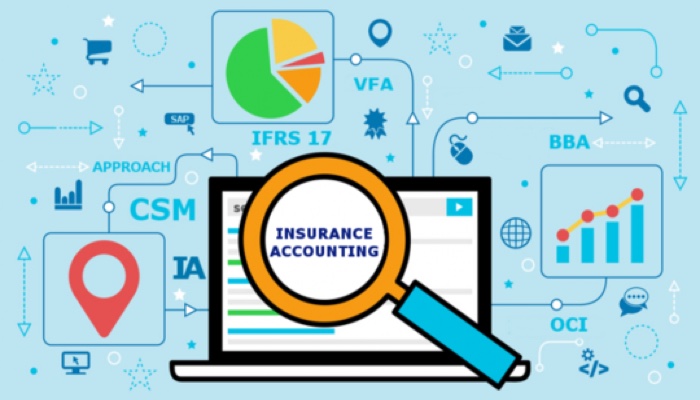The importance of actuarial models has increased significantly over the past decade with moves to principle-based reserves and risk-focused solvency assessment. Equity-linked guarantees and hedging programs, increasing demand by management for realistic What If? scenarios, and sophisticated asset-liability management risk analysis all contribute to the need for a greater dependence on the profession. Here we look at IFRS17, a current hot topic…
Reserves and the calculation of profit
Before an insurance company can calculate its profits, it needs to ensure it’s holding sufficient loss reserves to cover expected future costs of the insurance products they have sold.
Under IFRS 17, these reserves result from the following elements:
- Discounted Future Cashflows – All expected probability-weighted future cashflows such as cash inflows (premiums) and outflows (claims for losses, expenses), bearing in mind the time value of money
- Risk Adjustment reserve – This reserve is held for claims that differ from what is expected. It therefore should only be needed to be used to cover claims when they are higher than anticipated (the amount of Risk Adjustment reserve being held for the period can otherwise be released to profit)
- Contractual Service Margin reserve – This reserve represents the unreleased profit on contracts and is to be released over the life of the insurance policy. It’s therefore probably the most heavily scrutinised element and is examined in detail below
Contractual Service Margin and contract aggregation
Most IFRS accounting standards recognize and measure financials at the individual contract level. However, insurance companies underwrite large numbers of similar contracts in order to pool risk. For this reason, in IFRS 17 there are guidelines for contract aggregation for purposes of the calculating the necessary Contractual Service Margin (CSM) reserve.
The guidelines allow for the use of a ‘unit of account’ that is greater than looking at individual insurance contracts. This unit of account used is determined by the level of aggregation, which in turn determines the level of granularity at which onerous insurance contracts are identified and therefore how insurance revenue is recognized in financial statements. The level of aggregation effectively influences how profitability of the business is reported; this impact on profitability is the reason why the level of aggregation in IFRS 17 is at the centre of an industry debate.
IFRS 17 requirements for contract aggression
The aims behind IFRS 17’s requirements for the level of aggregation are to:
- Increase the transparency of insurance accounts by identifying groups of onerous contracts as soon as possible (rather than obscure them by offsetting losses with profitable contracts within the larger portfolio of contracts)
- Match realisation of profits more closely to the underlying insurance business by allocating CSM appropriately
- Create consistency in profit recognition within the insurance industry
IFRS 17 requires insurers to group insurance contracts according to these three criteria:
- Product portfolio: contracts subject to the same risk type are managed together as a single pool
- Profitability: contracts are grouped according to the degree of profitability at initial recognition so as to separate the profitable from the onerous
- Year of issue: groups of contracts meeting the profitability criteria are further split into cohorts that represent an issuing period (e.g. year)
The impact on actuaries
As a result of the above, the biggest initial impact is the need to update reserving models to include the two new reserving concepts included in IFRS 17: namely, Risk Adjustment and the Contract Service Margin reserves.
For both, there will be a number of methodology decisions to make, as well as a significant amount of model development work. IFRS 17 also requires changes to data and reporting processes.
Longer term, it also means that actuaries will become more deeply involved in the reporting of insurance company profits.
Traditionally, actuaries would calculate loss reserves and communicate these to auditors and accountants along with explanations on why they had changed from the previous year. This was often where their involvement ended.
Under IFRS 17, however, actuaries now have to communicate changes to the CSM to the auditors and accountants which, as we have seen, can be a significant element in how profit is reported. The profession’s role has therefore increased in importance.
If you want a job abroad, visit our jobs portal to see the latest vacancies. Our site includes a downloadable All You Need to Know guide which will tell you all you need to know about living and working offshore.





![Enjoy All Your Bermuda Days [Video]](https://www.hamilton-recruitment.com/wp-content/uploads/2022/06/Parade-700x400-1-500x383.jpg)
![Bermuda Careers for Actuaries [Video]](https://www.hamilton-recruitment.com/wp-content/uploads/2022/03/Video-Actuaries-700x400-1-500x383.jpg)
Leave A Comment
You must be logged in to post a comment.